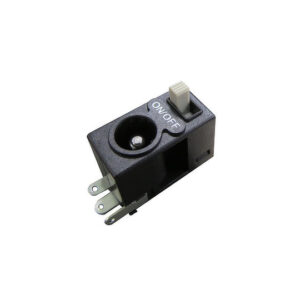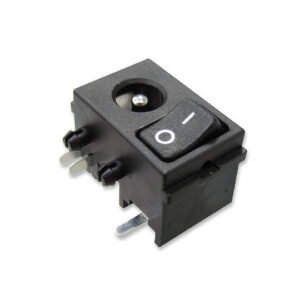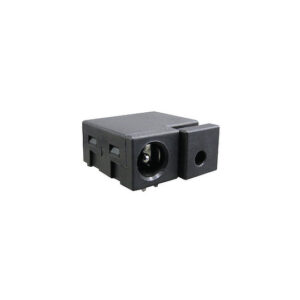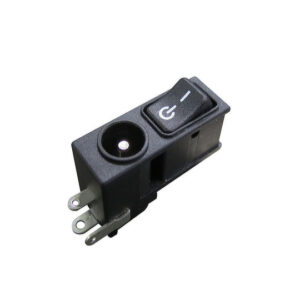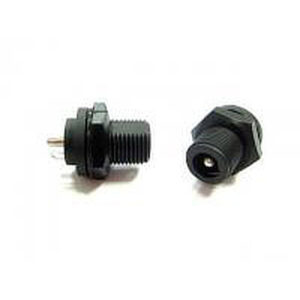DC Power Connectors
DC power connectors, also known as cylindrical connectors or coaxial power connectors, are designed to supply DC power to an extra-low voltage device. These rugged DC power connectors are available as both waterproof (IP67) and non-waterproof variations. Alongside these, we have combined connectors which include a pushbutton, rocker switch or slide switch. This allows for a smaller footprint than a sperate connector and switch configurations.
View Frequently Asked Questions about DC ConnectorsSJ Series – DC Jack Socket with Slide Switch
The SJ series of slide switches with integrated DC jack socket from Dailywell are the perfect multi-functional switch for when space is at a premium. At only 15mm by 10mm and with a depth of 14.1mm the SJ series is a great solution over separate switch and connector configurations....
View ProductLRJ Series – Power Rocker with DC Jack Socket
The LRJ series of power rocker switches with integrated DC jack socket from Dailywell are the perfect multi-functional switch for when space is at a premium. At only 14mm by 22mm and with a depth of 14mm the RJ series can be a great solution over separate switch and connector configurations....
View ProductDPR Series – Combined Pushbutton, DC Jack and Reset Switch
The DPR series of combined 3 in 1 switches from Dailywell incorporate a DC power jack, pushbutton and reset switch into one unit measuring 20.8mm x 21mm with a depth of 10.7mm. The DPR series is designed in a side by side format with PCB terminals for surface mounting with a 6.3mm diameter DC jack home and 3mm diameter reset keyhole....
View ProductRJ Series – Power Rocker with DC Jack Socket
The RJ series of power rocker switches with integrated DC jack socket from Dailywell are the perfect multi-functional switch for when space is at a premium. At only 9mm by 25mm and with a depth of 14mm the RJ series is a great solution over separate switch and connector configurations....
View ProductDC Series – Waterproof Circular Connectors
The DC series of waterproof circular connectors from GT Contact are ruggedly built with screw-type couplings and sealed to IP67. They can be used in-line with cable to cable connections or for cable to panel-mount connections....
View ProductFrequently Asked Questions about DC Connectors
DC connectors are also known as coaxial power connectors are sized based on their outer and inner diameters, for instance, sizes such as 6x4mm, 5.5×2.5mm and 4×1.7mm. DC connector are designed so that the larger number is the outer diameter, this would be the outer diameter of the male part or the size of the hole on a female part. While the smaller number relates to the inner diameter, this being the hole on the male part and the diameter of the inner pin on a female connector.
A DC power jack works by passing electricity through its central barrel and using its external barrel as the ground, this set up ensures that you cannot accidentally touch the live part of the connector. The male plug is then pushed into a female jack which is held in place by friction. The live part of the plug is now connected to the central pin within the jack while the outer ground is connected to the inner part of the jack housing completing the circuit.
AC and DC are both electrical currents, they stand for alternating current and direct current. AC power is the standard type of current that you will find in homes and businesses, it is called alternating current as the direction of the charge periodically changes between positive and negative. This is down to the way in which the electricity is created and distributed as AC can travel much further than DC. DC however is a direct current and does not change between a positive and negative state. This form of power is therefore found in batteries and battery-operated products, such as laptops. In these cases, the AC current from the wall outlet is passed through a transformer to change it to DC before it enters your device.

